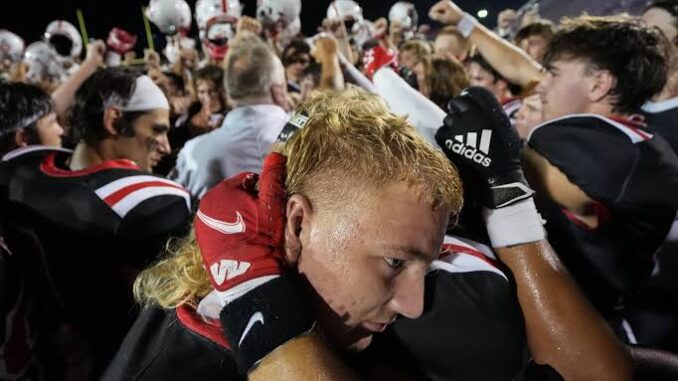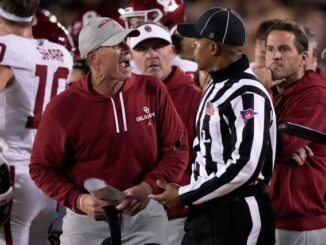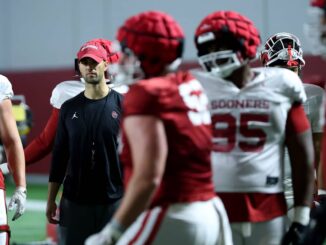
The University of Oklahoma’s football program has faced significant challenges in the past due to issues related to substance abuse among its quarterbacks. One of the most notable incidents occurred in 1989, involving starting quarterback Charles Thompson. Thompson was arrested on February 13, 1989, in Norman, Oklahoma, and charged with dealing cocaine. The arrest led to his immediate suspension from the team and had far-reaching consequences for both Thompson and the university’s football program.
Charles Thompson’s Arrest and Its Impact
Charles Thompson was a standout quarterback for the Sooners, earning a spot on the All-Big Eight Conference first team. Off the field, he was known for his community involvement, often speaking to at-risk youth about overcoming adversity and the dangers of illegal drugs. However, his promising career came to an abrupt halt when he was videotaped by the FBI on January 26, 1989, selling 17 grams of cocaine to an undercover agent for $1,400. Following his arrest, Thompson was released to his mother’s custody to await trial, during which he waived his right to a preliminary hearing. The university promptly suspended him from the team.
The incident garnered national attention, especially after a photograph of Thompson in handcuffs and a prison jumpsuit appeared on the cover of the February 27, 1989, issue of Sports Illustrated. This image became emblematic of the broader issues facing the Oklahoma football program at the time, which had already been under scrutiny due to previous player arrests for assault and rape. The cumulative negative publicity contributed to the resignation of head coach Barry Switzer, who had led the team for sixteen seasons.
At his trial in a federal court in Oklahoma City, Thompson pleaded guilty to one count of conspiracy to distribute cocaine and was sentenced to two years in prison. He began serving his sentence on September 20, 1989, at a federal prison in Big Spring, Texas. While incarcerated, Thompson spoke out about the pressures and pitfalls that can accompany big-time college football, shedding light on the challenges student-athletes may face.
Other Notable Incidents Involving Oklahoma Quarterbacks
While the incident with Charles Thompson remains one of the most significant drug-related cases in the history of Oklahoma’s football program, other quarterbacks have faced legal issues, albeit of a different nature. For instance, in 2017, Baker Mayfield, another standout quarterback for the Sooners, was arrested and charged with public intoxication, disorderly conduct, resisting arrest, and fleeing an officer. The arrest occurred in Fayetteville, Arkansas, and Mayfield later issued a public apology, describing the incident as the “biggest mistake” of his life. He pleaded guilty to three misdemeanor charges: public intoxication, disorderly conduct, and fleeing the scene. However, he was not suspended from the team following the incident.
Addressing Substance Abuse in Collegiate Athletics
The incidents involving Thompson and Mayfield highlight the challenges universities face in addressing substance abuse and misconduct among student-athletes. These situations underscore the importance of comprehensive support systems within athletic programs, including:
1. Education and Prevention Programs: Implementing mandatory workshops and seminars that educate student-athletes about the dangers of substance abuse and the consequences of legal infractions.
2. Counseling and Mental Health Services: Providing accessible mental health resources to help student-athletes cope with stress, anxiety, and other challenges that may lead to substance use.
3. Strict Enforcement of Conduct Policies: Establishing and enforcing clear codes of conduct, with appropriate consequences for violations, to maintain the integrity of the athletic program.
4. Mentorship and Support Networks: Creating mentorship opportunities where experienced athletes or alumni can guide current student-athletes in making positive life choices.
By proactively addressing these areas, universities can better support their student-athletes, promote a culture of responsibility, and mitigate the risks associated with substance abuse and misconduct.
Conclusion
The suspension of a key player due to drug-related issues represents a significant loss for any athletic program. The case of Charles Thompson serves as a poignant reminder of the potential consequences of substance abuse, not only for the individuals directly involved but also for their teams and institutions. It underscores the critical need for ongoing education, support, and vigilance within collegiate athletics to ensure the well-being and success of student-athletes both on and off the field.



Be the first to comment